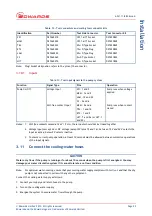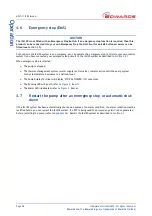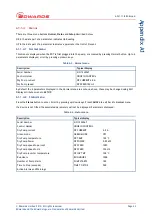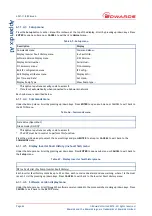
© Edwards Limited 2010. All rights reserved.
Page 29
Edwards and the Edwards logo are trademarks of Edwards Limited.
Maintenance
A541-11-880 Issue A
5
Maintenance
5.1
Safety and maintenance frequency
Ensure that the maintenance technician is familiar with the safety procedures which relate to the process
products pumped.
Allow the pumps to cool to a safe temperature before you fit lifting brackets or start maintenance work.
Vent and purge the dry pumping system with nitrogen before you start any maintenance work.
Isolate the dry pumping system and other components in the process system from the electrical supply so
that they cannot be operated accidentally. Note that the emergency stop function on the dry pumping
system is not an electrical isolator, unless a disconnect box accessory is installed.
WARNING
Isolate the electrical supply before working on the equipment.
WARNING
Having isolated the electrical supply from the pumping system, wait for at least 4 minutes for the
equipment’s capacitors to discharge to safe voltage levels (<50 V) before disconnecting the
electrical supply cable.
WARNING
Only personnel specially trained to perform electrical maintenance should attempt
troubleshooting inside electrical enclosures. These enclosures contain hazardous voltages and are
not operator areas.
WARNING
Leak test the system after maintenance and seal any leaks found to prevent leakage of dangerous
substances out of the system and leakage of air into the system.
WARNING
Electrical, nitrogen and water supplies are all potentially hazardous energy sources. Before
carrying out any maintenance the supply of these sources should be locked and tagged out.
WARNING
Personal protection equipment should be checked and used as specified by its supplier. Hazardous
chemicals that have been pumped are located within the pumps and piping. Use of suitable
protective gloves and clothing along with a respirator is recommended if contact with substances
is anticipated.
Particular caution should be exercised when working with Fomblin
®
oil and other fluorocarbon
materials such as some seal materials which may have been exposed to temperatures greater than
260 °C. Refer to Edwards Material Safety Data Sheets for detailed information.
















































